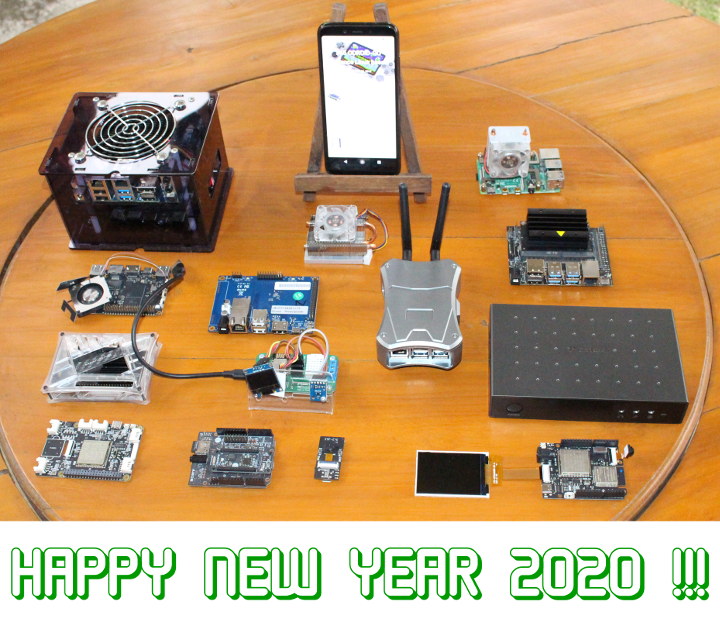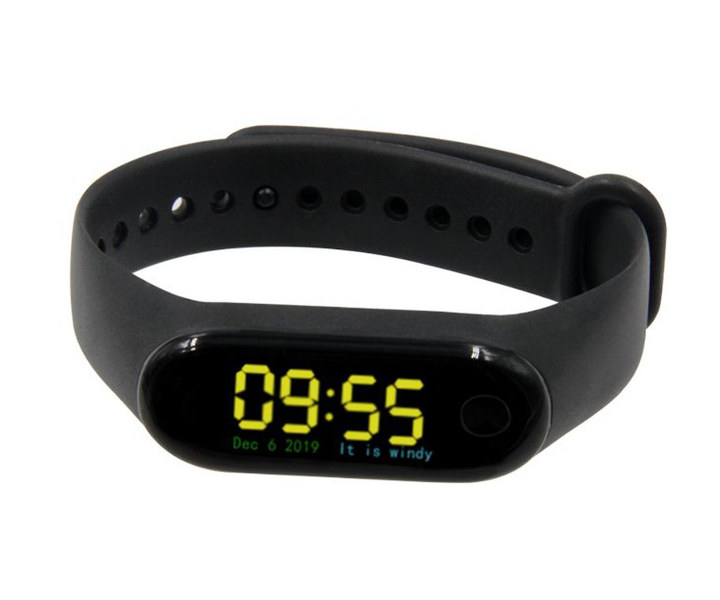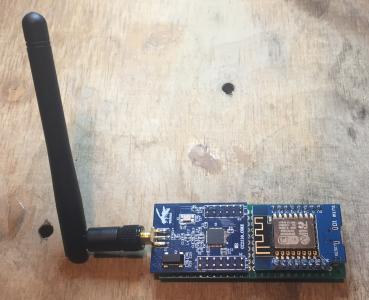You can have a product based on a microcontroller and operating fully offline, for example, a washing machine. But you’d now like to update your appliance to connect to the cloud so it can upload data to the cloud, and help your customer access it. This is a non-trivial update as it requires you to add a communication module be it WiFi or Ethernet, or a new microcontroller that would require you to update your firmware to support networking and other new features. You’d also need to develop your own cloud platform, and potentially a smartphone app. Cesanta VCON platform aims to simplify the upgrade with firmware that can be flashed to ESP8266 or ESP32 module, and remotely upgrade the firmware on STM32 and AVR microcontrollers. On the hardware side, you’d need to wire your existing MCU to the ESP32 module with UART for data, BOOT/RESET for OTA firmware update. […]
Espressif Systems ESP32 Gets Bluetooth LE 5.0/5.1 Certifications
Espressif Systems ESP32 was introduced in 2016, and one of the key differences between ESP8266 and ESP32 was that the latter supported Bluetooth 4.2. But since then, the Bluetooth Special Interest Group (SIG) released Bluetooth 5.0 (2016) with higher speeds and longer range, and Bluetooth 5.1 (2019) adding direction finding for indoor positioning applications. One would have thought that upgrading from Bluetooth 4.2 to Bluetooth 5.0/5.1 might have required a new radio, but apparently not. As you can see from the above link and screenshot, ESP32 is now Bluetooth LE 5.0-Certified having passed SIG Bluetooth LE 5.0 certification. That means the Bluetooth protocol version supported by the ESP32 microcontroller has been upgraded from Bluetooth LE 4.2 to Bluetooth LE 5.0 with improved stability and compatibility. Another link also shows Bluetooth 5.1 certification for ESP NimBLE Host stack. Sadly that does not mean ESP32 suddenly supports the longer range and higher […]
Year 2019 in Review – Top 10 Posts and Stats
2019 is closing to an end, or you may already be into 2020 while reading this post. In any case, that means it’s time to look back at 2019 and look forward to the events and new products to take place next year. While 2018 was a boring year for new processors, 2019 brought us some interesting new chips such as Amlogic S922X / A311D, or the first Arm Cortex-A55 only processors such as Amlogic S905X3. Rockchip RK3399Pro was promising when it was announced last year, but it never really took off. It was a pretty quiet year for Allwinner as well. RISC-V architecture has been ramping up with the first general-purpose RISC-V MCU: GD32V, WCH CH572 Bluetooth LE MCU, the launch of more SiFive RISC-V cores, and Kendryte K210 RISC-V AI processor announced last year has found its way into more and more boards. There have also been the […]
$18 TTGO T-Wristband DIY Arduino Programmable Smart Bracelet Features ESP32-PICO-D4 SiP
2020 is promising to be an interesting year for low-cost user-flashable smartwatches/bracelets. After the recent introduction of the $25 Pine64 PineTime Bluetooth enabled wearable companion for PinePhone Linux smartphone that will support various real-time operating systems such as Zephyr OS or FreeRTOS, we’ve now been informed that Liliygo launched TTGO T-Wristband smart bracelet powered by Espressif Systems ESP32-PICO-D4 SiP. The watch comes with 802.11 b/g/n WiFi 4 and Bluetooth 4.2 Classic+LE connectivity and is currently selling for under $18 and up on Aliexpress and Tindie. TTGO T-Wristband smart bracelet specifications: SIP – ESP32-PICO-D4 system-in-package with ESP32 Tensilica LX6 dual-core processor, clocked at 240MHz, 520 KB SRAM, 802.11 b/g/n HT40 Wi-Fi, integrated dual-mode Bluetooth (classic + low energy) Display – 0.96″ IPS color display Antenna – WiFi / Bluetooth ceramic antenna Sensor – Invensense MPU9250 9-axis motion sensor Expansion / Programming Interface – 0.3pitch 13-pin FPC socket Misc – NXP PCF8563 […]
Inkplate 6 ESP32 Wireless e-Paper Display Recycles Kindle E-reader (Crowdfunding)
Inkplate 6 wireless display is made from recycled e-Paper display taken from a used Amazon Kindle E-reader and adds WiFi (and Bluetooth) connectivity thanks to an ESP32-WROVER module featuring Espressif Systems ESP32 dual-core processor. The 6″ e-Paper display can easily be updated over WiFi, and used for a variety of applications or projects such as high-latency digital signage displays, collaborative task trackers, e-Paper typewriters, open-hardware E-readers, art projects and so on. Inkplate 6 specifications: ESP32-WROVER wireless module ESP32 dual-core Tensilica LX6 processor @ 240 MHz 8MB RAM, 4MB flash Connectivity – 802.11 b/g/n WiFi and Bluetooth 4.2 Display – 6″ e-Paper Display (ED060SC7) with 800×600 resolution taken from discarded Kindle readers; refresh time: 0.264 s; partial updates possible Storage – MicroSD card socket USB – 1x Micro USB Port for power and programming (via CH340C) Expansion EasyC / Qwiic connector with I2C Headers for power signals, I2C, SPI, ESP32’s GPIO, […]
Tasmota Open Source ESP8266 Firmware Now Supports Zigbee Connectivity
Sonoff-Tasmota is a popular open-source firmware designed to run on ESP8266 hardware for home automation projects. It was initially designed to run on devices from ITEAD Studio Sonoff family but now supports more products, boards, and modules from other brands such as Shelly, Wemos, Blitzwolf, and others. So the first news is that the project has recently been renamed from Sonoff-Tasmota to just Tasmota, and documentation has been moved from Github Wiki to Github.io. Tasmota Zigbee Support A piece of more important news is that Tasmota now supports Zigbee. More specifically, the Z2T (Zigbee to Tasmota) concept allows you to make your own Zigbee to WiFi bridge by combining Z-Stack-firmware on CC2530 and Tasmota firmware on ESP8266 / ESP82xx hardware. Basically all you need is ESP82xx hardware connected to a Texas Instruments C2530 based Zigbee device over a serial. Note that C2531 based device won’t work since they are connected […]
ANAVI Miracle Controller WiFi Board Drives Addressable LED strips (Crowdfunding)
Last year, we wrote a tutorial showing how to control an RGB LED strip Control ANAVI Light ESP8266 controller. The board only works with standard non-addressable 12V LED strips however, and Leon ANAVI received requests to support 5V and 12V addressable LED strips such as NeoPixels, WS2811, WS2812, or TM1804. So he updated ANAVI Light Controller design and has now launched a new open-source hardware certified board based on ESP8266 WiFi chip: ANAVI Miracle Controller. ANAVI Miracle Controller specifications: MCU – Espressif Systems ESP8266 Tensilica L106 32-bit processor Connectivity – Wi-Fi 4 802.11 b/g/n LED Strips Support – Up to two 5V or 12 V addressable LED strips; Supported models include WS2812, WS2812B, WS2811, TM1804, etc. (LED strip chipsets supported by the FastLED library) Expansion 4x I2C header for mini OLED display, sensors, and others 4-pin “GPIO” header with 1x GPIO, GND, 3.3V, and 5V signals Misc – Reset button, […]
NORVII IIoT ESP32 Industrial Controller Comes with Built-in OLED or TFT Display, DIN Rail Mount
We’ve previously covered at least one ESP32 industrial controller with TECHBASE Moduino X equipped with digital and analog I/O terminals, a 0.96″ OLED display, and support for various expansion cards for RS-485, LoRa, Sigfox… beside Ethernet, WiFi, and Bluetooth connectivity offered by the Espressif Systems chip. NORVII IIOT industrial controller – based on ESP32-WROOM-32 module – offers many of the same options as the TECHBASE model, but also integrates a choice of 0.96″ to 1.44″ OLED or TFT display, and comes with plenty of LED’s to ease troubleshooting. There are five variants from three series (AE01, AE02, and AE03) sharing the following specifications: Wireless Module – ESP32-WROOM32 with ESP32 dual-core processor @ 160 MHz, 520 Kbytes SRAM / 4 Mbit Flash, WiFi 802.11 b/g/n Bluetooth 4.2 Storage – Optional microSD card slot Display -Built-in 0.96″ OLED display. 0.96″ TFT display or 1.44″ TFT display Communication – RS-485, WiFi, Bluetooth, optional […]










